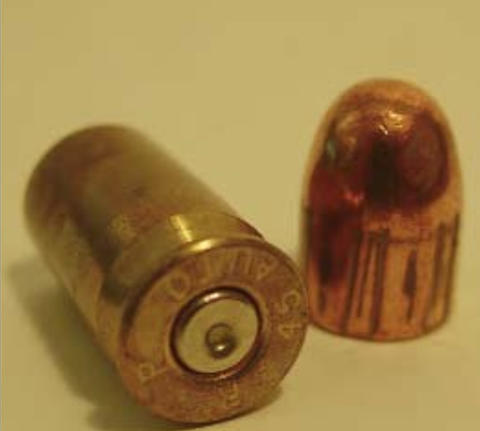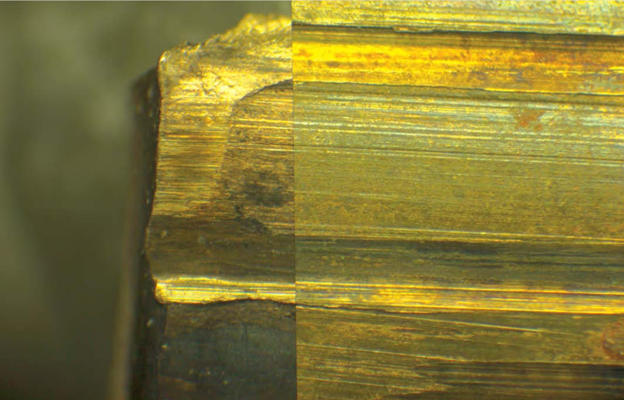
A fired cartridge case and a fired bullet.
Xiaoyu Alan Zheng and Ted Vorburger of PML's Semiconductor and Dimensional Metrology Division were appointed to the Organization of Scientific Area Committees' (OSAC) Subcommittee on Firearms and Toolmarks, part of an initiative by NIST and the Department of Justice to strengthen forensic science in the United States. The subcommittee will focus on standards and guidelines related to determination of whether an evidence bullet or cartridge case was fired from a suspect weapon. At present, there are no national standards in this field. Current guidelines and recommendations in the Firearms and Toolmarks field are used as quality check documents, however these guidelines have not gone through a standards development process. In their respective roles, Zheng and Vorburger will bring NIST expertise and provide leadership in the standardization of firearm and toolmark examinations. They attended the first OSAC subcommittee meeting in Norman, OK, on Jan. 20-22, 2015.
Zheng accepted an assignment to the task group on "Technology Development, Validation, and Implementation." The group will provide standards and guidelines for evaluating new measurement and comparison methods (e.g., the use of 3D topography microscopes and correlation algorithms) to enhance the process of firearm and toolmark examinations. Its scope includes (1) hardware for the 3D surface measurement of cartridge cases, bullets, and other toolmarks, (2) software for assessing degree of similarity and common origin, and (3) processes for applying new technologies in forensic laboratories to activities such as hit verification (i.e., verifying an examiner's visual comparison through the use of 3D tech), virtual microscopy (i.e., the use of 3D topography data to make an identification instead of examining the physical evidence), inter-lab data exchange, and dispute resolution.
Vorburger accepted an assignment to chair the task group on "Uncertainty of Measurements." This group will create procedures to express the uncertainty for measurements of physical quantities that matter for firearm and toolmark analysis. This includes issues associated with quantifying uncertainty in decision making.

"OSAC pulls together a broad stakeholder base of forensic science practitioners, researchers, and academics to identify and develop consensus-based documentary standards for specific forensic science disciplines," explains John P. Jones of NIST's Special Programs Office. "This diverse group of stakeholders which includes many practitioners, ensures that the standards approved through the OSAC process will be scientifically based and represent the best in industry practice. By encouraging all practitioners to leverage the OSAC approved standards, the forensic science industry will develop a more uniform approach to conducting specific forensic science analyses including in firearms examinations.
"In a courtroom setting, the officers of the court can ask practitioners if they followed or employed specific OSAC approved standards for the analysis they conducted. The answer could be yes or no and there would be a reason provided as to why the examiner chose their course of action. By having standards, it allows all parties affected by a specific examination process to have a basis by which to conduct an examination or inquire about the process used to generate the results. This increases transparency and also encourages all practitioners to use scientifically validated methods approved by a national body."
Click here for additional details on NIST forensics efforts.

